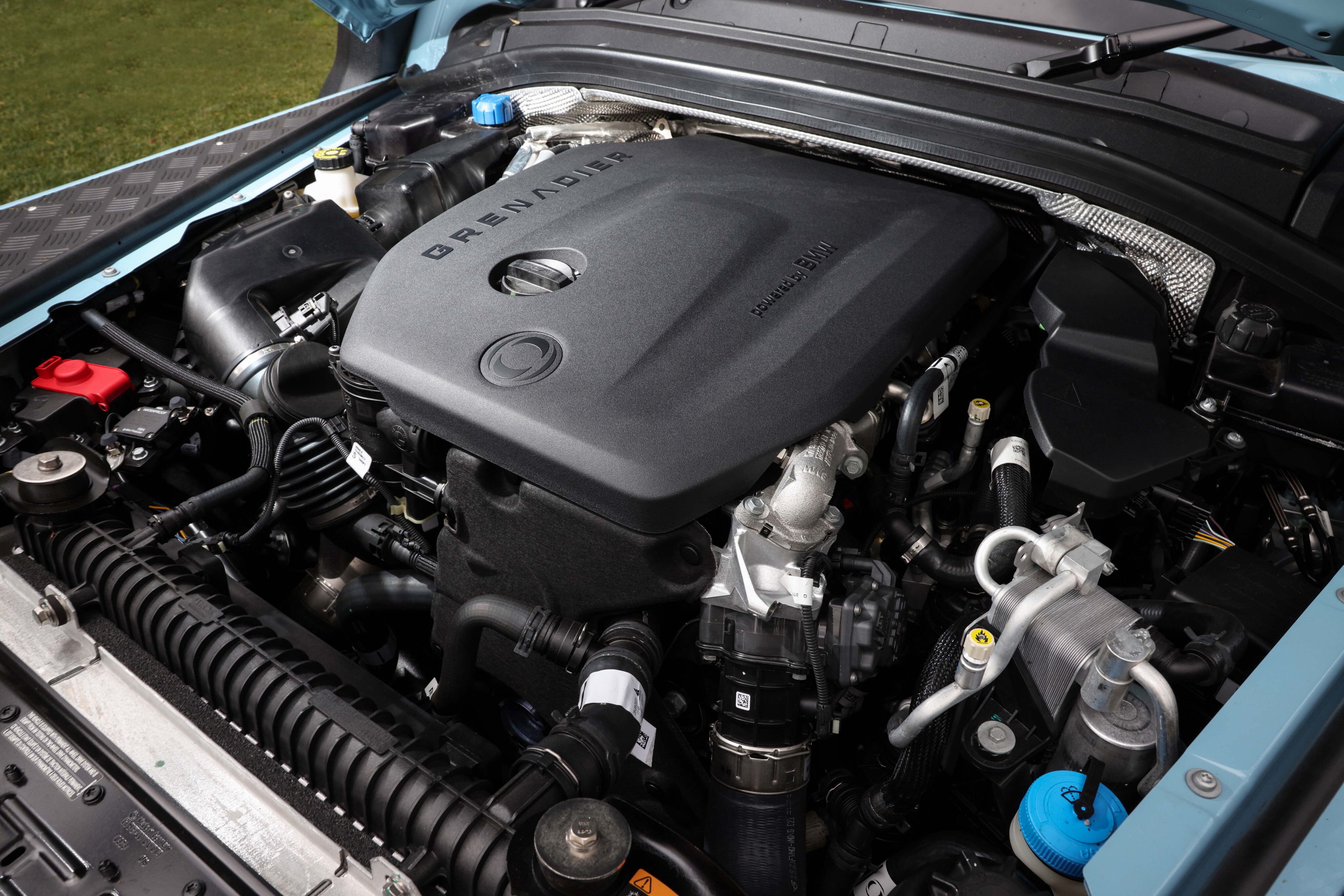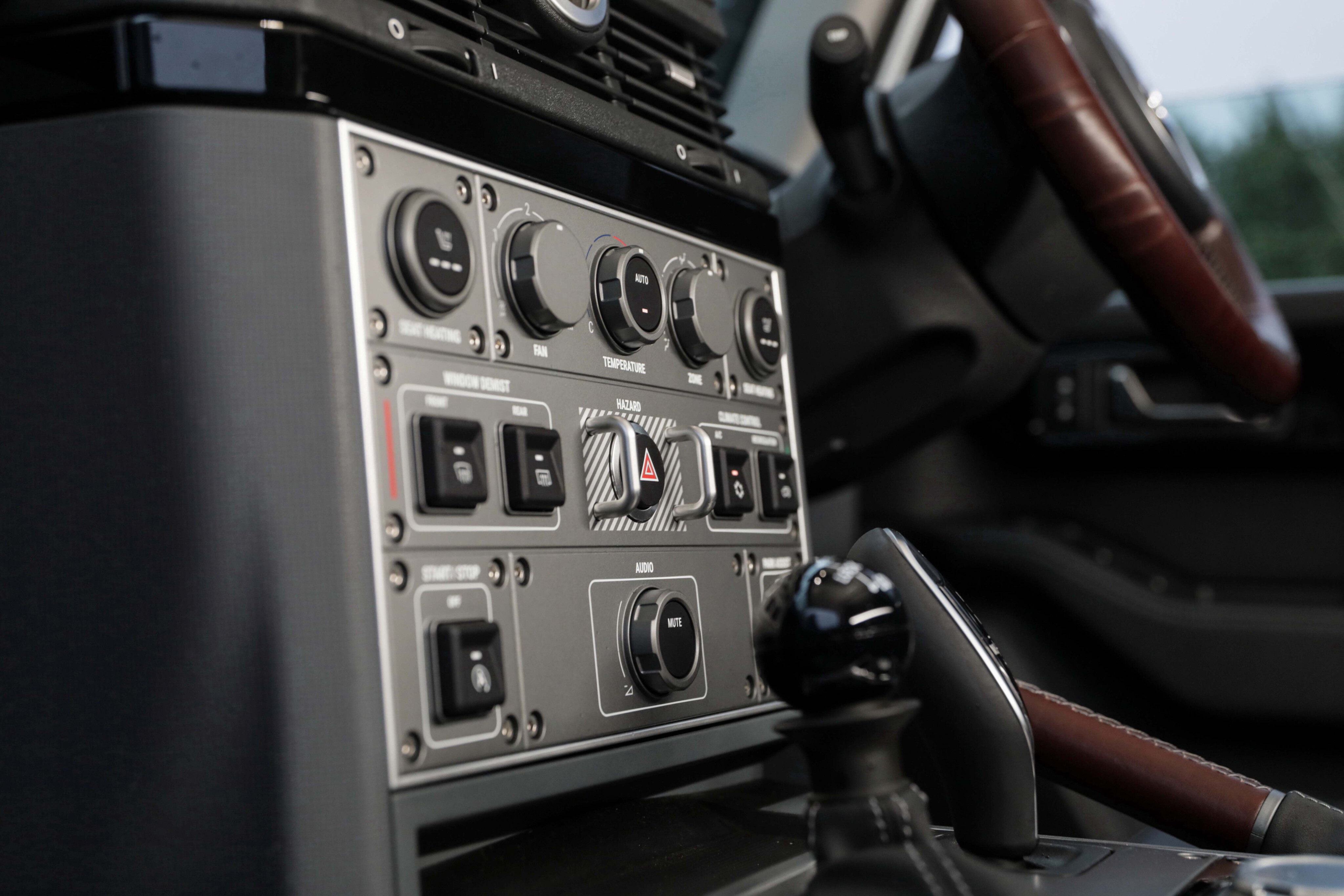
Things we like
- Rugged engineering and construction
- Comes with what you want and not what you don't need
- Huge range of quality accessories
Not so much
- Heavy weight
- Long list of options gets costly
- Left-hand foot rest placement
The Ineos Grenadier is a most welcome addition to the 4x4 vehicle ranks as it is a rugged, go-anywhere off-road-capable wagon in a market that is otherwise all going softer.
It’s been a long time coming after delays caused by global issues and product supply limitations, but Australian customers are finally taking delivery of their cars and we got to drive a few of them at the local launch.
A quick refresh for anyone to whom the Ineos name is not known; the Grenadier came about after British businessman, Jim Ratcliffe, was turned down by Land Rover when he approached the Green Oval squad with hopes of buying the rights to – and continuing to build – the classic Land Rover Defender after Land Rover said it was being axed.

Ratcliffe responded by going out and devising his own version of the iconic off-roader and creating a brand to build and sell it – as you do.
The result is a boxy body that looks as much Mercedes Benz G-Wagen as it does Defender, riding on a ladder-frame chassis with live axles suspended on coil springs, and powered by a choice of petrol- or diesel-fuelled engines courtesy of BMW.
Like the G-Wagen, Defender and LandCruiser 76 Series, the Grenadier is a vehicle made to go anywhere and be used by private owners, fleets and NGOs.
The Grenadier has arrived in Australia in three specification levels with a huge range of options that would allow you to tailor it to the levels of features or abilities you need from it.

All specs are available with the choice of petrol or diesel engines, while the automatic transmission and full-time, dual range 4x4 is the only drivetrain offered. Petrol and diesel versions are the same price.
The base Grenadier starts at $109,000 for the utility wagon and $110,000 for the station wagon. The utility wagon has just two front seats while the station wagon adds a three-position second row seat. For anyone wanting the ultimate touring Grenadier and who doesn’t need a second row seat, the utility wagon not only gives you more cargo space but adds around 25kg to your payload.
Both the Trialmaster and Fieldmaster editions start at $122,0000 and 123,000 respectively, for the utility and station wagons.

The prices go up from there, with even basic white paint costing $994 and more for metallic colours or contrasting roof and chassis colours.
The Trialmaster is tailored more toward the adventurous drivers, and as such it includes the Rough and Smooth option packs which gets you front and rear, electrically locking differentials, BFGoodrich KO2 All Terrain tyres, front parking sensors, heated door mirrors and windscreen, side puddle lamps, a lockable centre console, auxiliary charging points, rear access ladder, and an alarm system.
The Fieldmaster misses out on the lockers and all-terrain tyres but gets leather trim, safari roof, premium sound system and other features as standard. As mentioned you can option any and/or all of these features to any model to create your own specification.

JUMP AHEAD
Powertrains
Both of the BMW-sourced engines are inline sixes of 3.0-litre capacity. The B57 diesel uses sequential turbocharging to generate its 183kW and 550Nm, while the B58 petrol engine uses a single twin-scroll turbocharger to generate its 210kW and 450Nm.
Driving the two engines back-to-back shows just how narrow the gap has become between modern petrol- and diesel-fuelled engines. The diesels are quieter than ever, and from within the cabin can be hard to distinguish from petrol, while the modern turbocharged petrol engines deliver diesel-like levels of grunty torque.
While neither engine makes the bulky Grenadier feel particularly fast, the factory claims that it will run the zero to 100km/h dash in 8.8 seconds for the petrol engine and 9.8 seconds with the diesel. They are swift without being quick, as you would need in such a 4x4 vehicle.

Fuel consumption is quoted as being 12.6L/100km for the petrol and 10.5L/100km for the diesel, while the vehicles are already set to Euro6 emissions regulations which are yet to be the standard in Australia.
EU6 does mean that the diesel engine runs with Adblue and this comes from a 17-litre tank. The main fuel tank holds 90 litres of fuel.
The ZF eight-speed automatic gives nothing to complain about, doing what it should when left in auto and allowing manual selection once the shifter is tipped to the side. The shifter itself, which we recall hating when it was in older BMWs and Range Rovers, seems to have been sorted out and is now easy to use.

The transfer case has a nice, tactile, precise lever to activate low range and the centre diff lock, so there’s no waiting for electric motors to do the job for flashing dash lights or other frustrations. Pure usability!
The transfer case offers both high and low range with the centre diff unlocked in a very Land Rover-like way. This is handy when you are using low range for reversing your trailer. Of course, you can lock the centre diff in both ratios as well.
The Grenadier’s hydraulically assisted power steering can have an odd feeling at times. It’s slow to return to centre and can load up on tight turns, but it’s something that I’m sure you would get used to with regular use. The power steering pump is not driven directly off the engine but from an electric motor.

Safety
While much of Ineos’s efforts went in to the capability and durability of the Grenadier, it didn’t forget about safety systems.
While not equipped to the level of modern SUVs or passenger cars, the Grenadier does come with ABS, ETC, ESP, front, side and curtain airbags, lane departure warning, AEB, TPMS, and trailer stability control. The Grenadier has not been tested by ANCAP.
An Ineos spokesperson did suggest that the Grenadier could be getting more safety tech with 2024 update later in the year.

Equipment
Likewise, the level of equipment and connectivity may not be game-changing, but the car is equipped with most things you need including power window, climate control air-conditioning, an audio system with wireless Apple CarPlay and Android Auto.
However, there's no in-built mapping navigation, so it does rely on a phone connection for that. Alternatively the Pathfinder app allows you to upload custom GPX mapping files for more remote tracks.
The Grenadier is not a large wagon like a Y62 Patrol or LC200 but more comparable to the LC80 or GQ Patrol in size. It might look like a classic Defender, but the Grenadier’s cabin is much more accommodating in both the front and back seats. The driver's seat space is a bit narrow and your legs door rest against the door and console, and the left bootrest is way back from the bulkhead and requires a bit of getting used to.

Thankfully there’s plenty of adjustment in the seat, although it’s manual adjustment only, and the steering column is adjustable for both height and reach.
The rear seat offers plenty of leg and head room for adults, but three across the back would be tight squeeze.
Another oddity that takes some getting used to is the location of the speedometer which is in the screen at the top of the centre stack and not directly ahead of the steering wheel. The smaller screen there is reserved only for warning lights such as when you have 4x4 or the locking diffs engaged.

While we’re all for keeping the controls away from touchscreens and sticking to switches and dials, the plethora of both in the Grenadier’s centre stack also takes some time to get accustomed, certainly longer than the one day we had driving it.
There are more switches above you in the overhead console, but they are mainly for lesser-used off-road functions like off-road modes, lockers and auxiliary switches.
The omission of power adjustment on the seats is part of Ineos’s philosophy of keeping electricals to a minimum and only including the essentials, so power seats miss out in this rig. Many of the electrical systems including the second battery option when fitted are up high under the back seat out of the way of dust and water should you go where you probably shouldn’t have.

Off-road
With plenty of ground clearance and wheel travel at the axles, the folks from Ineos had no qualms sending us down a steep and rutted gully as part of the launch drive.
You can feel the axle working beautifully under the vehicle as they flex their way over the uneven ground, keeping the all-terrain tyres on the ground where they can get the best grip.
Likewise when climbing back out ,we let the electronic traction control do the work and didn’t employ the locking diffs to get through the rough stuff. The Grenadier makes easy work of such tracks and it was obvious there’s more in reserve for trickier terrain.

On the B-roads and highway heading back to town the Grenadier was firm and stable, never unsettled on rough roads and quickly reached the speed limit once we hit the highway.
The steering does require plenty of turns once you reach suburban streets, but again it's something you get used to. It is a small price to pay for a vehicle with such a broad range of abilities.

Verdict
While it was the demise of the classic Land Rover Defender that brought about the Grenadier, the new Defender is an obvious competitor to this new player in terms of size, price and abilities.
But the new Defender relies on tech and adjustable suspension to broaden its abilities where the Grenadier keeps to more traditional methods. That puts it in the realms of LandCruiser and Patrol, more specifically the LC76. The LandCruiser 70 is more basic again, leaving the Grenadier to fill the middle ground, which is a space it slots into very neatly.
The arrival of the double cab pick-up Quartermaster mid-way through 2024 will only add further options to Ineos ownership. Same design, same powertrains and specification in a rugged ute.

| Ineos Grenadier Station wagon | Diesel | Petrol |
|---|---|---|
| Engine | Bi turbo I6 diesel | Turbo I6 petrol |
| Capactiy | 2993cc | 2998cc |
| Max power | 183kW@3250-4200rpm | 210kW@4750rpm |
| Max torque | 550NM@1250-3000rpm | 450Nm@1500-4000rpm |
| Transmission | 8 speed automatic | 8 speed automatic |
| 4x4 system | Full-time/dual range | Full-time/dual range |
| Construction | 5-door wagon body on ladder chassis | 5-door wagon body on ladder chassis |
| Front suspension | 5-link live axle on coil springs | 5-link live axle on coil springs |
| Rear suspension | 5-link live axle on coil springs | 5-link live axle on coil springs |
| Tyres | (Opt) 265/70-17 AT | (Opt) 255/70-18 AT |
| Weight | 2718kg | 2,643kg |
| GVM | 3550kg | 3550kg |
| GCM | 7000kg | 7000kg |
| Towing capacity | 3500kg | 3500kg |
| Payload | 833kg | 907kg |
| Seats | 5 | 5 |
| Fuel tank | 90L | 90L |
| ADR fuel consumption | 10.5LL/100km | 12.6L/100km |
| On-test fuel consumption | N/a | N/a |
| Approach angle | 36.2° | 36.2° |
| Ramp over angle | 28.2° | 28.2° |
| Departure angle | 36.1° | 36.1° |
| Ground clearance | 264mm | 264mm |
| Wading depth | 800mm | 800mm |
Things we like
- Rugged engineering and construction
- Comes with what you want and not what you don't need
- Huge range of quality accessories
Not so much
- Heavy weight
- Long list of options gets costly
- Left-hand foot rest placement



COMMENTS